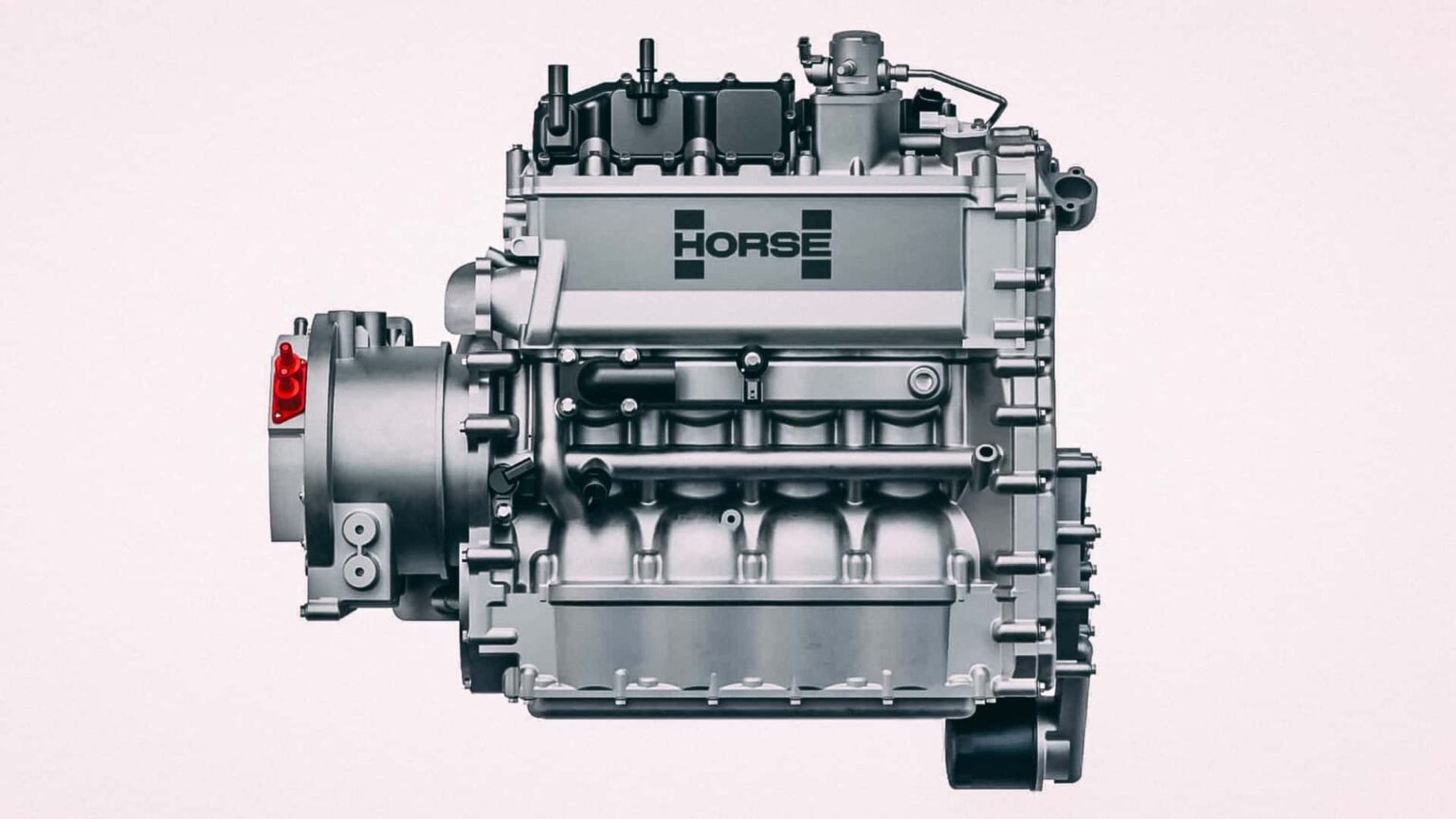Despite a significant focus on electric vehicles by much of the industry, combustion engines are proving hard to kill. Companies are still pouring billions into development, and Horse Powertrain, the Romanian company behind the engine that runs on liquified petroleum gas, has another new engine that can turn an EV into a range-extended vehicle.
The naturally aspirated engine, called the C15, is tiny. It measures just 19.7 inches by 21.7 inches by 10.8 inches in size with a 1.5-liter displacement. The briefcase-sized unit houses the generator, inverter, exhaust, and cooling package. It produces up to 94 horsepower.
It’s designed to integrate with existing electric drive units and recharge the battery. Its small size allows it to fit horizontally or vertically in the front or rear compartments of B- or C-segment electric vehicles with little to no modification needed.
There’s a turbocharged version of the engine that can make up to 161 hp. Horse designed the C15 for larger D-segment passenger cars and light commercial vehicles. It’s Euro 7 compliant, according to the company.
Photo by: Horse Powertrain
“Range extended EVs are the fastest-growing powertrain category in many global markets,” said Matias Giannini, Horse Powertrain’s CEO. “The Horse C15 range extender solution offers OEMs a straightforward and cost-effective way to tap into this opportunity and adapt their native BEV platforms into REEVs.”
Extended Range EVs Are Having Their Moment
With the future of electric vehicles still uncertain, automakers are beginning to hedge their bets. EV development is ongoing, but resources are shifting toward hybrids and range extenders.
Scout’s new cars, an electric SUV and pickup, will have a range-extended option called Harvester when they enter production in 2027. It’s supposed to give the vehicles over 500 miles of electric range by recharging the battery.
Photo by: Horse Powertrain
Ram might have delayed its Ramcharger, but it’s a 1500 with an electric drive unit and a 3.6-liter V-6 that serves as the generator. Even Hyundai is planning to launch a range-extended EV in 2026.
These range-extending engines don’t need to be big or powerful to keep the battery charged. They can operate at an efficient RPM that conserves fuel while alleviating any concerns about range anxiety. REEVs might be the bridge automakers needed to transition to pure battery-electric vehicles.
Read the full article here


